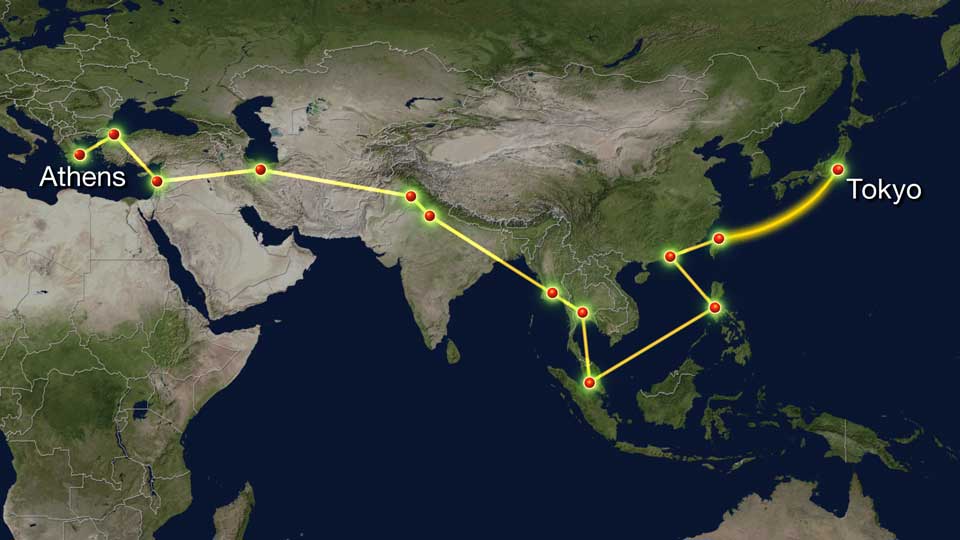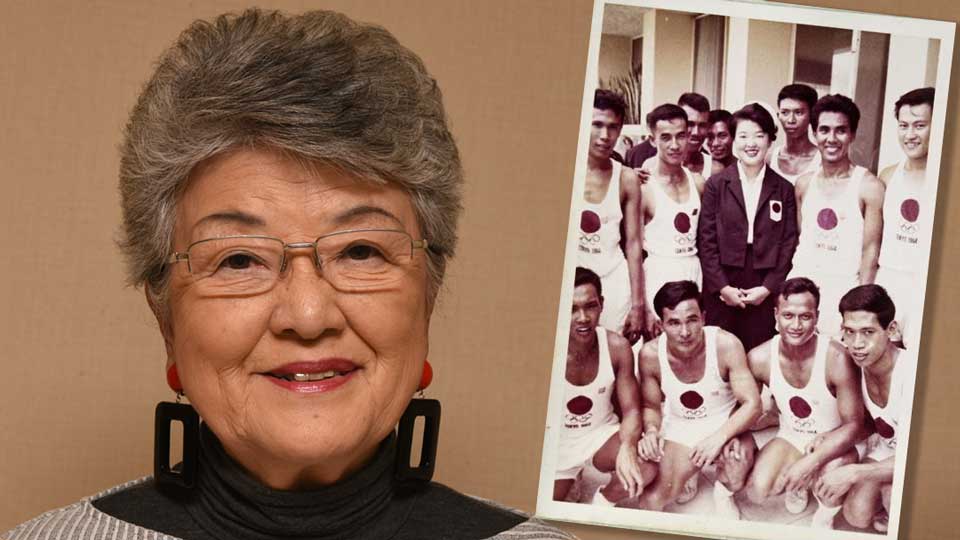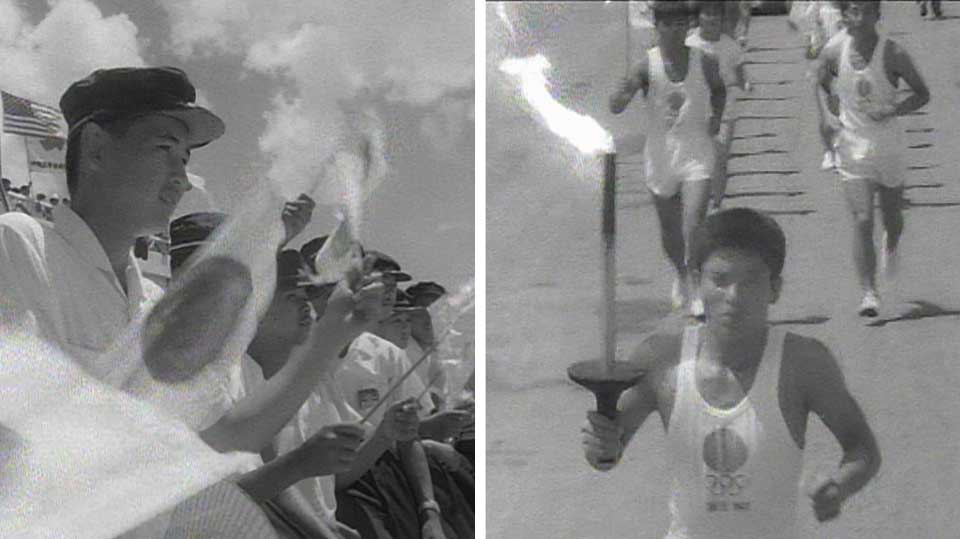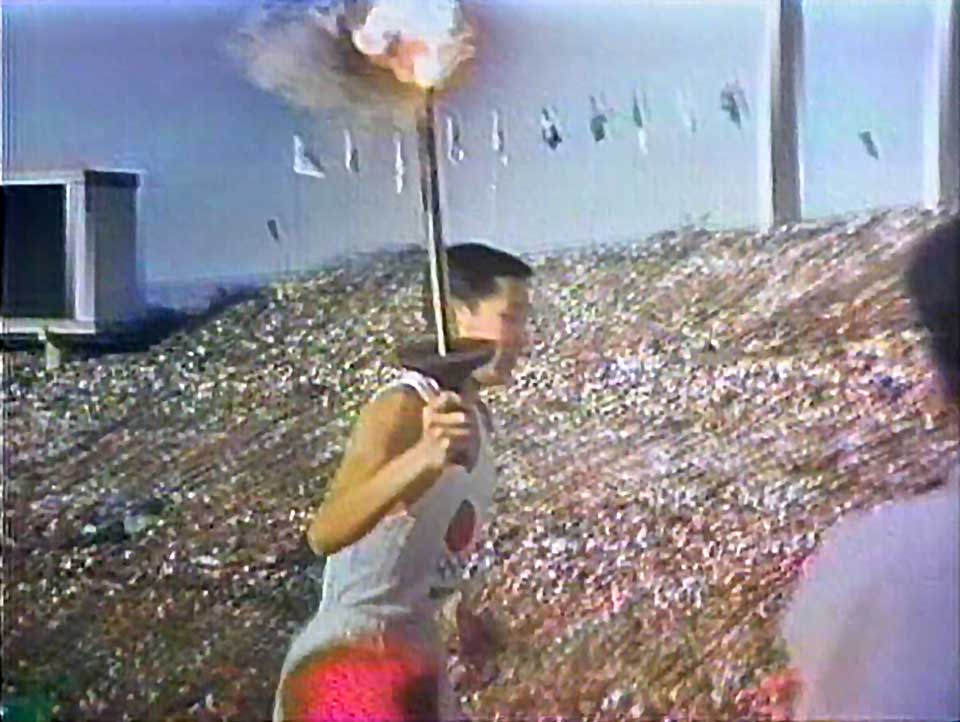The organizers of the 1964 Tokyo Games thought people in Asia should be involved in the region's first-ever Olympics, so they dispatched a mission to map out a route.
The path they chose took in 11 cities: Istanbul, Beirut, Tehran, Lahore, New Delhi, Yangon, Bangkok, Kuala Lumpur, Manila, Hong Kong, and Taipei.
Technically, some of those cities had hosted the flame before, but only as an airport pit stop en route to Melbourne for the 1956 Games. The Tokyo Games eight years later offered the region its first relay, and more than 800 torchbearers took part.

Passing through war-torn Asia
Kuno Akiko was an interpreter for the Japanese team that orchestrated the tour of the continent. She says she had one serious concern before leaving Tokyo.

The route passed through Southeast Asia, including countries that had seen fierce fighting between Imperial Japanese and Allied forces during World War Two.
"It was less than 20 years since the war," she says. "Many had suffered at the hands of the Japanese military, and I was very worried about how people would react when they saw the flame for the Tokyo Olympics."
But her concerns vanished as soon as the relay started. Throngs of people lined the streets and packed the stadiums. She says the crowds were so big in some places that the runners struggled to get through. Part of Kuno's job was to ensure that the flame passed to the next torch within six minutes, before the fuel ran out, which she says wasn't always easy.
"People were too excited, and wouldn't listen to me. Often they made way for the runners only when I started shouting in Japanese," says Kuno. "I could sense a tremendous enthusiasm. People looked proud to take part in the first Olympics in Asia. They might have been thinking they'd be able to hold the Games too, one day. Asia was united at that moment, at least during the relay."
Kuno says the members of the Japanese mission were determined to keep the flame alive until Japan. For them it symbolized keeping people's hopes alive, instead of severing them midway.
Olympic flame in Okinawa
The Olympic flame reached Japan on September 7, 1964, landing in Okinawa, which was still under US control after World War Two.
"The first thing I saw after landing on the island was the US flag. I had really complex emotions," Kuno recalls. "But in the next moment, I saw lines of Okinawan people waving the Japanese flag. I believe the flame gave them hope that they'd soon be reunited with the rest of Japan."
At the time, people living in Okinawa were banned from displaying the Japanese flag, except on national holidays. But the US military made an exception for the relay.

Burning symbol of hope
The flame finally arrived at Tokyo's National Stadium on October 10, 1964. The final runner was Sakai Yoshinori, a member of Waseda University's running club. He was born in Hiroshima Prefecture on August 6, 1945, the day an atomic bomb was dropped on the city.
"When the flame was lit in the National Stadium, I couldn't help crying. I was so happy the flame ended its journey safely," Kuno says. "Young people may laugh and say 'What's the big deal? It's just a fire.' But for my generation the Olympic flame represented a strong hope for peace and a determination that we won't ever go to war again."

Olympic legacy
The flame for the upcoming Olympics arrived in Japan in March last year. When the relay was postponed, along with the Games themselves, the flame was exhibited in cities around the country.
Kuno says the Olympics today are very different to six decades ago. The Games have been commercialized, she says, the torch is now often carried by celebrities, and the relay takes place only in the host country and Greece.
"The flame should travel the full, authentic route, and be carried by people with a real connection to the event," she says. And while the delayed relay has disappointed everyone involved, Kuno says it's also a chance to rethink what the Olympics are all about.


